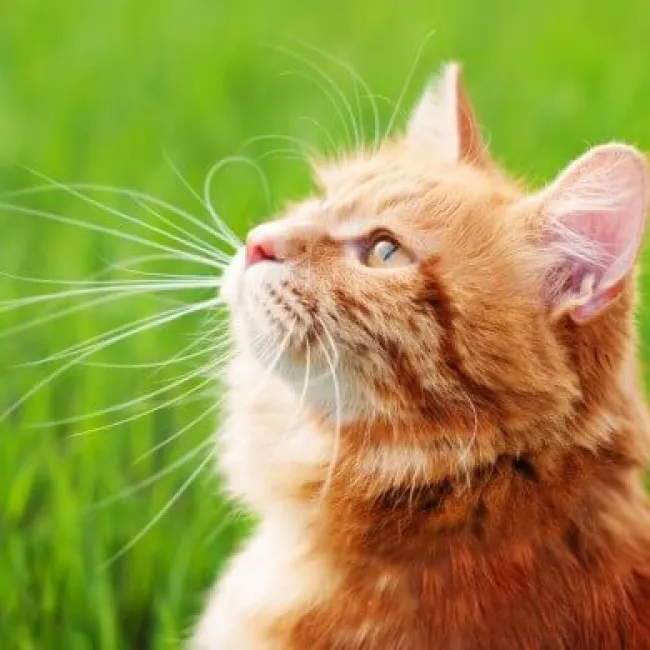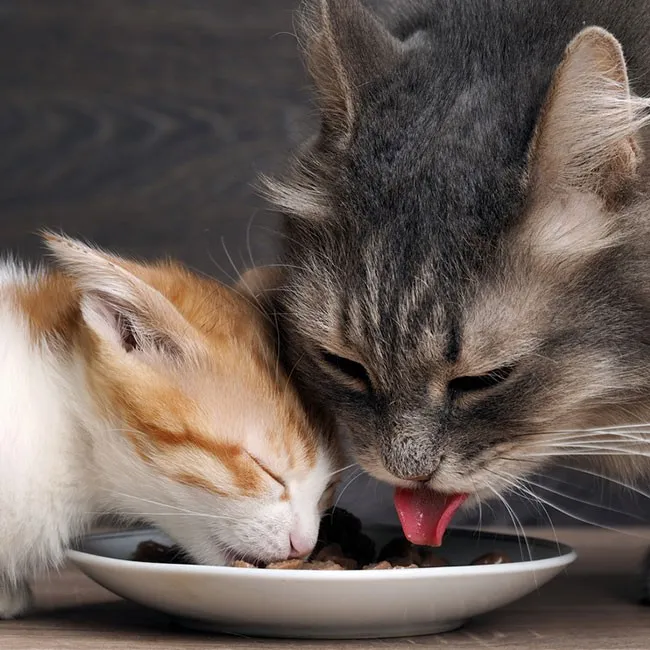Share
Cats are known for their independent nature, but our feline friends still crave attention from their owners from time to time. However, all owners will know that while sometimes it might seem like the perfect time to give your pet some affection, your cat might have other ideas. Scratches, bites and hisses can all come out of nowhere. If you're looking to avoid collecting any battle scars, read on. Here, we'll let you know how to pet a cat, when to pet them, and some of their favourite places to be touched.
Curb your enthusiasm
Cats aren't like dogs. Dogs tend to be relatively calm and trustworthy around new people, which is why you can stop someone in the street and ask to pet their dog. Cats are more like us; not too keen on strangers coming up to them and stroking their head. So don't get too excited and run in guns blazing. Instead, don't approach the cat. Let them come to you. For instance, if you're at a friend's house or your family has a new pet, go about your day as normal. If and when the cat is familiar with you or wants to know more, they'll let you know. They might rub against your leg, purr, meow, or even straight-up come sit on you.
How to pet a cat: baby steps
Start small. Notably, a little scratch on the top of a cat's head is a good way to test the waters. Pet too much, too quick and you might get a scratch or two back. All cats are different, and some will not be too keen on stroking all the way down their backs or their tails right away.
As a rule, don't rub a cat's belly. While a prone cat looks like it wants you to stroke its front side, most do not appreciate it. Instead, it's a sign that the cat trusts you enough to expose itself, so to speak. Even if it shoots you a gaze that says 'go to town', do not go to town. Refraining from a belly rub is the perfect way to help build trust with a new cat.
Also, it's good to remember that an approaching cat doesn't necessarily want to be touched. If you're new to the cat, they might want to see who you are and what you smell like. Cats have a very sensitive sense of smell, so smells play an important part in a cat's attitude. Or it might just be hungry, and you're the nearest potential food dispenser.
Remember, if a cat has flattened ears, hisses, has dilated pupils, or stops purring suddenly, it's not in the mood for petting. So keep your hands to yourself, if you know what's good for you!
How to pet a cat: scratch that itch
If your cat is new to you, a rescue or the like, you might not be able to ask someone with experience where to pet them. And since you can't ask said cat, you'll need to discover which types and locations of petting they like. Thankfully, even though cats can't speak, they can express their desires through their body language. A cat who likes a full backstroke, for instance, will likely move their body along your hand to perform one. That way, you'll know to try it yourself in the future. They'll also rub specific body parts on you, or nuzzle their head or ears into your lap. Just be careful - as each cat is different, some will seriously dislike certain types of petting. Ears, for instance, can go either way. Some cats like it. Other cats hate it.
Most cats like being petted between their ears, across their cheeks or beneath their chin. Give those a go, and always try to stroke towards the hair, not against it. Job done? Good. Now, you know how we mentioned the ears earlier? Well, now's the time to test those bad boys out. Try rubbing them between your thumb and forefinger. Don't do it too hard, though, or you might meet Santa Claws.
How to pet a cat: full-body action
Now you're ready to stroke down the whole of the cat's back. Start at the top of their head, and with your palm, apply a small amount of pressure. Then, draw your hand down from the head, over the spine, and down along the tail. If the back pushes back into your hand, then they're digging the technique. If the fidget, recoil or run away, then guess what? They're not so keen. However, even if they like the ol' backstroke, don't get too eager. Like people, some cats have a certain tolerance of contact before they get claustrophobic. So if you notice your cat not enjoying the rub so much, retract that hand.
Other things to remember: cats usually like being petted after a meal, so if they're purring, relaxed and trusting, it's a good time to be affectionate. And always remember to spread your sessions out, so as not to annoy them. Now you know everything you need to about how to pet a cat! Enjoy.








